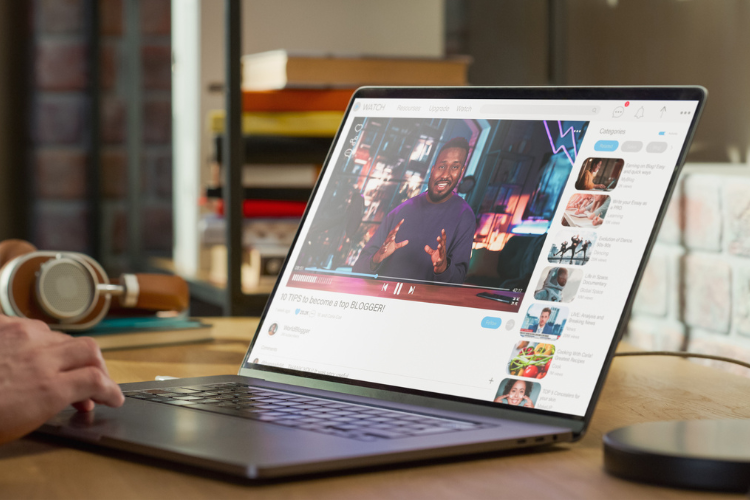While YouTube has become a go-to resource for tutorials, entertainment, and educational content — all of which are indeed free — finding healthcare compliance training you can trust isn’t easy.
Let’s review 15 reasons why you shouldn’t use YouTube for healthcare compliance trainings, along with your best alternative option.
Calculate how much a manual training process is costing your organization.
Healthcare Compliance Regulations and Accreditation
Healthcare compliance and workplace safety is heavily regulated by federal governing bodies, such as OSHA, OIG, OCR, and CMS. Hira Rashid, Ph.D., Senior Learning Program Manager of MedTrainer, notes that on top of federal regulations, individual states may require additional staff training in certain areas in effort to streamline processes and improve quality of care. Further, accrediting bodies, such as The Joint Commission (TJO) or Accreditation Association for Ambulatory Health Care (AAAHC), may add their own training stipulations, which generally surpass federal and state regulatory requirements by specifying focus areas and training subtopics by role.
Rashid also says training programs will continue to face increasing scrutiny from regulatory and accrediting agencies, requiring that courses be taken through approved providers, are interactive with multimedia, be ADA-WCAG compliant, and in some instances, must incorporate learning formats such as scenario-based learning. These specifications will also drive and impact the standards for healthcare professionals wanting to obtain or maintain licensure.
For healthcare facilities that are accredited and contracted with federally-funded programs, such as Medicare and Medicaid, compliance with CMS regulations becomes paramount. Any slip up, medical mishap, or educational deficiency — such as disseminating improper “trainings” from non-approved sources — can lead to costly fines, reputational damage via public forums, and of course, losing accreditation.
YouTube: To Use or Not To Use
With all of these considerations in mind, below are 15 reasons why you should avoid relying on YouTube for healthcare compliance trainings.
1. Inaccurate or Outdated Information
YouTube is a user-generated platform, and the accuracy of content varies from one creator to the next. Healthcare compliance requires up-to-date and accurate information aligned with current regulations, which cannot be guaranteed on YouTube.
2. Lack of Verification
Unlike platforms that provide accredited courses, like MedTrainer, YouTube lacks a stringent verification process for content creators. This absence of vetting can result in unreliable or biased information being presented as fact — a big no-no in healthcare.
3. Non-Compliance With Regulations
Healthcare compliance is subject to strict regulations and standards. Relying on YouTube for training makes it impossible to ensure adherence to these regulations, potentially leading to legal and ethical issues. Unwittingly sharing non-compliant YouTube videos as so-called training videos puts you, your staff, and facility at risk.
4. Privacy Concerns
Healthcare compliance often involves sensitive patient information. Both uploading content and viewing training materials on YouTube could breach HIPAA Privacy and Security rules, whether you intended to or not. As a covered healthcare entity, if you share a video with your staff that inadvertently spreads protected health information (PHI), you are just as liable as the random — sometimes anonymous — original content creator.
5. Limited Interactivity
Effective compliance training is increasingly requiring interactive elements like quizzes, case studies, and discussions. YouTube’s one-way communication model doesn’t provide the necessary tools for robust interaction or evaluation.
6. Lack of Customization
Healthcare compliance training needs to be tailored to specific roles, departments, and regulations. YouTube’s generic content isn’t customizable, making it impossible to meet the unique needs of each healthcare entity.
7. No Tracking or Reporting
While monitoring progress and assessing the effectiveness of training programs is crucial in healthcare compliance, there is absolutely no way to confirm whether or not a staff member actually watched a “training” video on YouTube. The platform lacks the tracking and reporting features necessary to measure trainees’ comprehension and progress. And heaven forbid, if a healthcare inspector asks you to prove who has taken certain courses, YouTube will leave you empty-handed.
8. Time Consuming
If you’re using YouTube for training, you’re not only spending time searching for a course, but also vetting the material by comparing its content to current regulatory standards and requirements, then perhaps sending emails to all staff with the video attached. A few email remainders later, you’re waiting on their reply that it’s been viewed (so you hope). If you’re really on top of things, you’ll also have to manually record who self-reported that they completed the training — perhaps on paper or an Excel spreadsheet. That’s a whole lot of back-and-forth and time wasted.
9. Unregulated Content
YouTube’s vast content library includes non-credible sources, misconstrued information, and biased perspectives (not to mention the controversial comment sections). Healthcare professionals need reliable, evidence-based information, which is easily compromised on YouTube.
10. Variable Video Quality
Video and sound quality on YouTube can fluctuate, affecting the trainees’ reception of essential details in training materials. Poor video quality can create disinterest and increased likelihood that your staff will not watch it in full.
11. Limited Accessibility Features
Healthcare compliance training should be accessible to everyone, including those with disabilities. YouTube’s accessibility features vary and might not be robust enough to accommodate all learners.
12. Distractions and Interruptions
YouTube’s algorithm often suggests unrelated or irrelevant content and frequent advertisement interruptions, leading to distractions during critical training sessions. These annoyances can hinder the learning process, resulting in poor knowledge retention and time wasted.
13. Videos Disappear
YouTube channels and their creators have the liberty of deleting videos anytime they wish for any reason. This means that if you or staff need to reference the training video for a refresher or clarification on a particular point, it’s quite possible it will have been deleted. You’ll have to start from scratch searching for a new video and hope that the original video you sourced for training wasn’t deleted due to misinformation. Eek!
14. Diversity Limitations
It’s important that every training, not just diversity-specific courses, reflect diversity and inclusion. The course content itself, whether it’s HIPAA, OSHA, or other, should convey inclusion via the manner in which the training is delivered, the instructors, the images used in the training, the language, examples provided in the course, case studies, and more. YouTube’s training content on compliance is often outdated and not properly vetted for implicit biases.
15. Lacks Multi-Functionality
If you’re using YouTube for staff training, you’re missing out on other functionalities invaluable to maintaining compliance. Comprehensive tracking and reporting, automated reminders to staff, status updates, certificates of completion, and automated staff onboarding paths with course curriculums auto-assigned in bulk by role are just some of what YouTube does not offer. An all-in-one platform that covers all your compliance needs, from learning and compliance to credentialing, can save you a lot of time, money, and a few headaches.
Choosing Another Option for Healthcare Compliance Training
So, while YouTube might seem like a convenient option for training on topics like HIPAA, OSHA best practices, workplace violence/sexual harassment, and so on, is it really worth risking non-compliance and losing everything you’ve worked for?
A healthcare-focused learning management system, such as MedTrainer, provides approved, unbiased, up-to-date courses (including CE qualified training), and meets the ever-evolving regulatory standards necessary to maintain a thriving practice. An all-in-one platform brings together other aspects of healthcare compliance, including credentialing and document management, to streamline operations.
Take a closer look at MedTrainer and everything it has to offer — schedule a free demo today.

